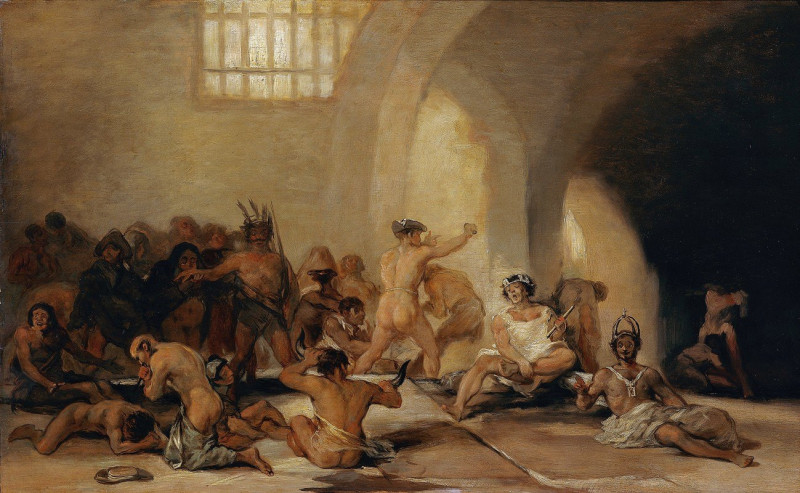Nohubo remedio. (Nothing could be done about it.) (1796-1797)
Technique: Giclée quality print
Recommended by our customers
More about this artwork
"Nothing Could Be Done About It" by Francisco de Goya, from his seminal 'Los Caprichos' series, is a profound visual narrative that communicates a dark and complex tableau drawn from the society of Goya's time. Created around 1796-1797, this etching is infused with symbolism and biting social commentary.The composition features a woman forced onto a donkey, facing backwards—a traditional form of public humiliation. Her starkly disrobed torso and the dunce cap she wears, decorated with the figure of a bird on top, amplify the themes of public exposure and ridicule. The surrounding crowd, depicted with varying expressions of mockery, indifference, and participation, encompasses her, rendering the scene almost claustrophobic.Goya employs strong, dark lines and shading to direct the viewer’s attention onto the central figure and her plight, magnifying the intensity of the public spectacle. The woman's somber expression, paired with the title, suggests resignation to her fate, pointing to the inevitability and helplessness that Goya saw in the society governed by superstition and moral hypocrisy."Nothing Could Be Done About It" serves not just as a reflection on a specific punitive practice, but as an enduring critique of human nature and societal norms, mirroring Goya’s disillusionment with the Spanish society of his era.
Delivery
Returns
Francisco José de Goya y Lucientes (30 March 1746 – 16 April 1828) was a Spanish romantic painter and printmaker. He is considered the most important Spanish artist of the late 18th and early 19th centuries. His paintings, drawings, and engravings reflected contemporary historical upheavals and influenced important 19th- and 20th-century painters. Goya is often referred to as the last of the Old Masters and the first of the moderns.














































